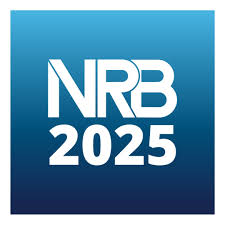Once a year most studios plan a dance recital to celebrate a year of student maturity, growth, and technique in their dance classes. It’s a lot of fun when children present the joy of what they have learned coupled with wonderful music, artistic costumes and age-appropriate choreography! Woo-hoo! I just got back from Alabama where I enjoyed the dances that my 2 grandchildren participated in. I’m bustin’ with pride.
 Yes, it’s recital time and because I get lots of questions about end-of-the-year presentations, I thought that I’d share some pointers on what to look for in a healthy, age-appropriate studio versus what to observe about a studio that is unhealthy. When I use the word unhealthy, let me clarify. I am referring to dances for children that are hyper-sexualized with adult costumes, choreography and music. To further understand this issue, see the APA report on the sexualization of girls.
Yes, it’s recital time and because I get lots of questions about end-of-the-year presentations, I thought that I’d share some pointers on what to look for in a healthy, age-appropriate studio versus what to observe about a studio that is unhealthy. When I use the word unhealthy, let me clarify. I am referring to dances for children that are hyper-sexualized with adult costumes, choreography and music. To further understand this issue, see the APA report on the sexualization of girls.
Healthy dance studios do the obvious. As a young dancer takes classes, children engage in an age-appropriate curriculum and develop more advanced technical skill year by year. Adult sexualized movement content is nowhere to be seen. Many excellent studios, educational institutions, and recreational dance facilities have technical goals that serve to advance a child to the next level. Of course, the best studios have a written educational curriculum with intentional, defined outcomes for each year of class.
At healthy dance studios, dance educators have a lot of knowledge to share with students and they also have a wonderful passion to share it in the lessons they teach. Age-appropriate dance studios don’t focus on having a certain body type; they don’t compare children negatively and they don’t value winning a competition above nurturing each student for their individual strengths. I would also look for teachers who talk with their students about trends like ‘losing weight’ for external purposes versus the value of eating a balanced diet. Teachers should also verbalize why their particular studio doesn’t choose adult costumes, choreography and music for their students. Children need to be aware of why hypersexualization hurts them. Of course all dance educators teach external technical movement but they also greatly influence the growth of internal values and self-esteem. With clear educational outcomes defined, children are released to have a wonderful time learning about the wonder of moving their bodies. In a dance studio, the atmosphere should be loving and the communication to parents should be consistent and open. As a parent, you should be able to ask questions about any aspect of a dance class without feeling awkward. The environment should be welcoming!
Most importantly, look at the finished choreography for older girls (and sometimes younger grades) that is shown during the end of the year dance recitals or at competitions. That will give you a clear visual understanding of the philosophy of that particular studio. Are you seeing hypersexualized movements/costumes/music anyplace in the choreography curriculum? Look at this example. Because the culture is normalizing hypersexualization, you can’t. It’s important to understand that, as the years pass, your child will eventually be influenced by the dance studio culture that they are a part of. Your child will also be seasoned by the older dance students and the leadership that they exercise.
Don’t be afraid to set an appointment and directly ask a particular dance studio owner about hypersexualization. There’s nothing wrong with this question: “What is your philosophy about the use of adult costumes, choreography and music for children enrolled at this dance studio?” Next month I’ll define what unhealthy, age-inappropriate choreography means as it relates to children’s dance. In August, I’ll give you some tips that you can use to educate a dance studio owner that you are concerned about. They might not know about the negative outcomes of choreography, music and costumes that hypersexualize children. Remember that danceawareness.com has free research and suggestions for you to share.
If you have any questions, feel free to email me and ask them at mary@soultosolechoreography.org. I hope that you enjoy the beauty of dance and the well-researched benefits of dance that most children enjoy. Just be careful to choose the right studio so that your child does not experience negative outcomes!




